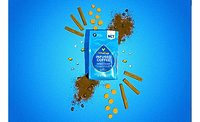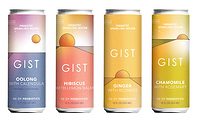Label-friendly vitamins and minerals promote health
Functional beverages aid in vitamin and mineral delivery

Within the past few decades, there’s been a major shift in how consumers view nutrition. In the mid-1990s, beverage formulators were modifying products with negative-nutrition, thereby removing fat, sugar and salt to make products healthier. However, once the “bad” stuff was taken out, consumers began to associate those products with poor taste.
If consumers don’t like the taste of product, regardless of how healthy it is, they won’t re-purchase it, experts note. “This drove the industry to create better-for-you products that improved health by adding ingredients rather than removing them,” says Michael Kemp, nutrition manager for Kerry, Beloit, Wis.
“Fortification is really the process of replacing the vitamins that are lost during processing,” he adds. “The industry has evolved this to not only replace what is lost, but to also provide levels that can provide targeted health benefits.”
Niki Carnell, category strategy manager at Chicago-based Glanbia Nutritionals, notes the evolution of beverages being “all about refreshment” to the endless combinations of vitamins and minerals that today play a significant role in clean-label, healthy, better-for-you beverage trends.
“If we go way, way back, the original ‘better-for-you’ beverage was milk and then came vitamin-fortified juices. Then came meal replacement drinks that are now the bridge of what we consider today as ‘better-for-you’ beverages,” Carnell explains. “Consumers are looking for beverages that are not only healthy, refreshing and taste good but also are clean label and provide a combination of health benefits like giving you energy, supporting your mood, making you full or replacing your meals.”
Research also supports this claim. The Washington, D.C.-based International Food Information Council’s (IFIC) 2017 survey found that 96 percent of respondents seek health benefits from the foods and beverages they consume, even carbonated soft drinks (CSDs). In fact, Netherlands-based Innova Market Insights found that 25 percent of all new soft drink launches were functional products.
As beverage formulators look to balance fortification and taste properties, ingredient suppliers highlight the importance of these characteristics to exist homogenously.
“It’s not enough that products taste great, consumers also expect them to contribute to a healthy lifestyle,” says Andy Ohmes, global director for high intensity sweeteners at Minneapolis-based Cargill. “They’re looking for products that ‘work’ for them, whether they’re fortified with protein, vitamins, calcium, fiber or some other nutrient.”
Ardie van Lankveld, market manager for Sweet at Corbion, Gorinchem, Netherlands, also notes the inclusion of healthy ingredients in food and beverages. “Across the board, healthy ingredients of all types have become more popular — and vitamins and minerals remain the top choice for many,” van Lankveld says. “One area that has certainly been impacted is fortified waters, which have become a firm favorite among younger and active consumers, partly due to the fact they can reduce or eliminate altogether the use of artificial additives and sugar.
“With a very obvious healthy positioning as people are more conscious of drinking enough water, adding minerals and vitamins is a seemingly simple choice, but solubility and retaining transparency can be an issue here,” he continues. “The challenge is providing the nutritional profile consumers want, without compromising the appeal of the product.”
Dietary disconnect
According to the IFIC, eight in 10 (80 percent) of consumers remain confused about how to achieve desired health outcomes. For instance, only 28 percent were able to name a food they would seek out to help their top health concerns. At 10 percent, protein was most frequently identified, followed by vegetables (7 percent), vitamins and minerals (5 percent), and fruits (4 percent).
“This dietary disconnect — the inability to connect specific foods and nutrients to desired health outcomes — illustrates the need for stronger, clearer nutrition education based on the best available outcome, said Joseph Clayton, chief executive of the IFIC Foundation, in a statement.
When it comes to health and well-being, food and beverage manufacturers can consider potassium chloride as a source of potassium instead of high levels of sodium that can increase blood pressure, suggests Janice Johnson, food technical and application services lead at Cargill. Based on the USDA’s 2015-2020 U.S. Dietary Guidelines, Americans consume more sodium and less potassium than the recommended dietary intake levels.
“For some individuals, high levels of sodium can increase blood pressure. Potassium is known to lower blood pressure and potassium chloride can be used in formulation to enrich potassium in food products,” Johnson says. “In addition, potassium chloride can be used to partially replace sodium chloride (salt) to help lower sodium while maintaining flavor.”
Despite the headlines announcing the “next big thing” in vitamins and minerals, the well-established and best-known ones still account for the lion’s share of the market, experts say.
Corbion’s van Lankveld lists a few vitamins and minerals, including the immune-boosting vitamin C to support the prevention and treatment of the common cold; calcium for dairy-style drinks and to support healthy bones and teeth; vitamin D for calcium absorption and to aid the metabolism; and magnesium, to support metabolism and bone strength.
Despite its value in promoting a healthy immune system and cardiac rhythm, magnesium usage is declining. “Magnesium consumption has declined dramatically over the past 100 years, so now around 50 percent of the U.S. population is thought to be deficient, and beverages are a universal and easy way of redressing the imbalance,” van Lankvel says.
In addition to omega-3s for heart health; vitamin D for bone, immune and brain health; and calcium for bone health in women, Kerry’s Kemp says vitamin B12 is being used more frequently for cognitive health. Emerging on the scene is vitamin K2, a variant of vitamin K that is designed to work synergistically with vitamin D. This vitamin works to ensure calcium is delivered to bone tissue while vitamin D facilitates its absorption.
Kerry’s Kemp notes that demographics play a big role in fortification strategy. “Our vitamin and mineral needs change based on our sex, age and ethnicity,” he explains. “If a product is positioned for use with women, then the vitamin fortification would be entirely different than for men. As an example, some fortified products for women place higher emphasis on calcium.”
Protecting vitamin efficacy
Although vitamins and minerals are commonly being infused into beverages, ingredient suppliers note the importance of maintaining a two-pronged approach, which includes balancing taste and most importantly, protecting the efficacy of vitamins and minerals in final formulations.
Donna Brooks, director of global business development for delivery systems at Westchester, Ill.-based Ingredion, suggests using an emulsion-based delivery system when delivering oil-soluble vitamins into beverages to mask offnotes and deliver shelf-life stability and cost benefits.
“It’s challenging to incorporate oil-soluble vitamins (such as A, D, E and K) into aqueous-based beverage due to their low water-solubility, chemical instability and low bioavailabilty,” Brooks explains. “Hence, an emulsion-based delivery system is desired when delivering oil-soluble vitamins into beverages. Emulsion droplet size, composition, charges on the droplet system, as well as beverage aqueous phase properties (pH, ionic strength and other ingredients — chelating agents and antioxidants) need to be considered when formulating the beverage.”
Oxygen, light and heat are major threats to vitamin and mineral stability, Kerry’s Kemp notes. “Products with high levels of vitamins and minerals should always pay close attention to reducing oxygen exposure by using nitrogen purging, reducing direct light exposure and keeping products stored cool,” he says.
Another top challenge in vitamin and mineral fortification is solubility especially because many minerals are supplied in powder format and are prone to chalkiness. Additionally, some minerals and vitamins also exhibit bitterness or have an unpleasant aftertaste, which can necessitate the use of masking ingredients, Corbion’s van Lankveld says.
Working with a high-dose nutrient like magnesium also can have implications for oxidation and acidity and can lead to crystallization of ingredients within the bottle during processing, he adds. To overcome this challenge, van Lankveld suggests the company’s ELECSIS calculator as a valuable tool.
He explains that the calculator enables formulators to predict and quantify the impact of various ingredients on their formulation in terms of pH, osmolality and precipitation. This cuts the time, effort and costs of products trials and helps companies identify the ideal formulation faster so new products can be more quickly brought to market.
In addition to functionality, taste is a key purchase driver, Cargill’s Ohmes says.
“Vitamins and minerals deliver great benefits to a beverage, but they may also impact taste,” Ohmes says. “To compensate, formulators often turn to sweeteners. There are plenty of choices, but to keep sugar levels in check, we recommend customers consider zero-calorie stevia sweeteners, often used in combination with erythritol.”
With more consumers turning to vegan and vegetarian diets, Glanbia’s Carnell expects to see more iron and iron binding complexes become more popular to boost iron deficiency in diets.
“Personalization is going to play a big role in beverage fortification. Consumers can already get customized vitamin kits delivered to their home,” Carnell says. “As people continue to learn more about their bodies, we expect that they will want to fuel their bodies with their specific nutrient needs. Beverages are a convenient way to do that.
“We do believe that vitamin and mineral fortification in beverages is going to continue to grow,” she continues. “We also know that most consumers aren’t going to sacrifice taste and convenience. Even if a customer wants more vitamin and mineral content, they likely aren’t going to drink mass quantities to meet their needs.” BI
Looking for a reprint of this article?
From high-res PDFs to custom plaques, order your copy today!









